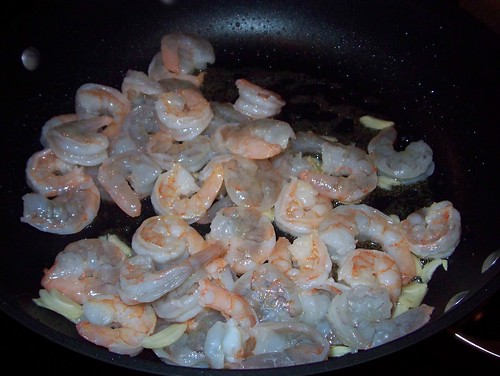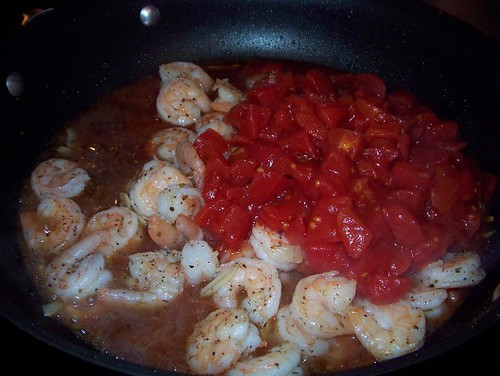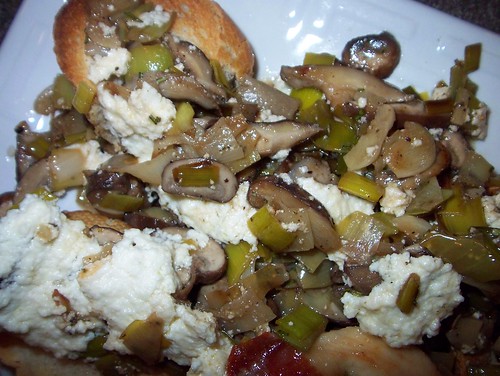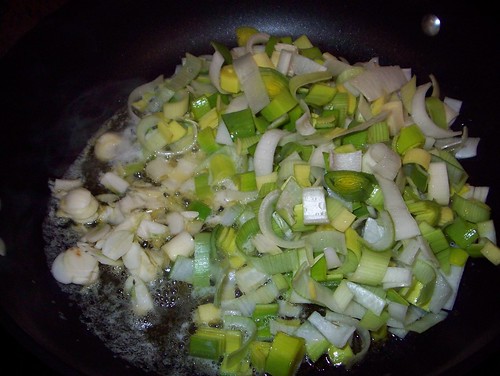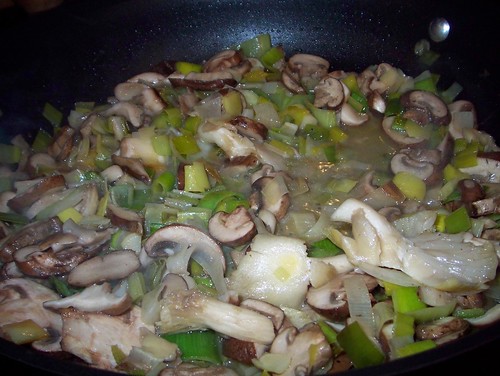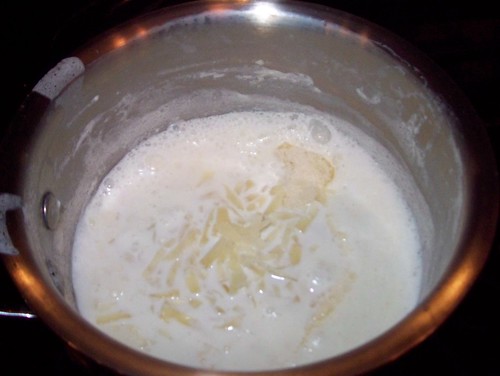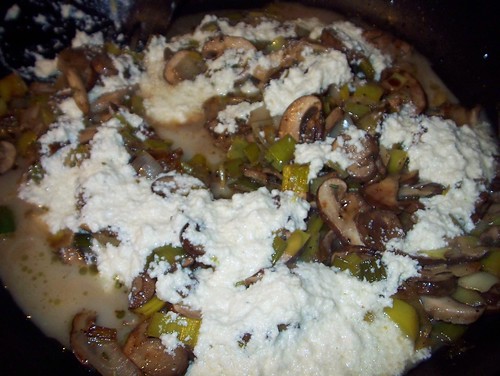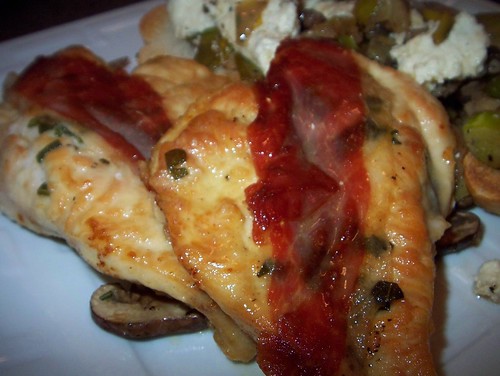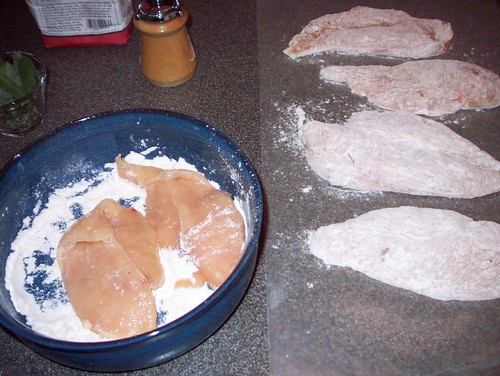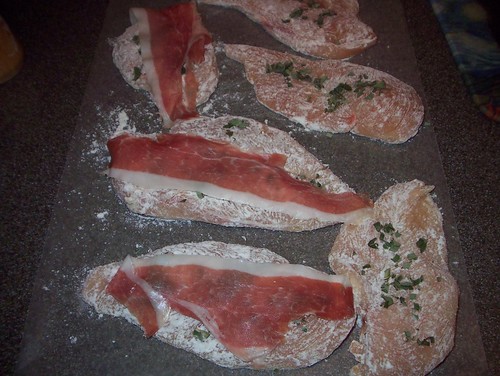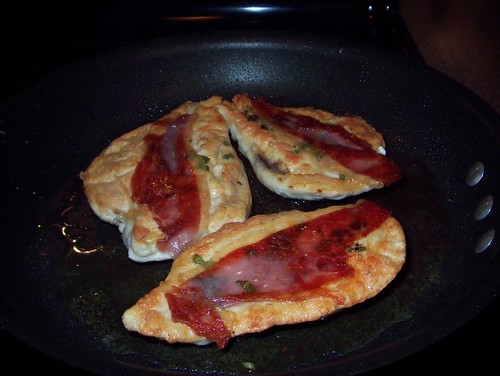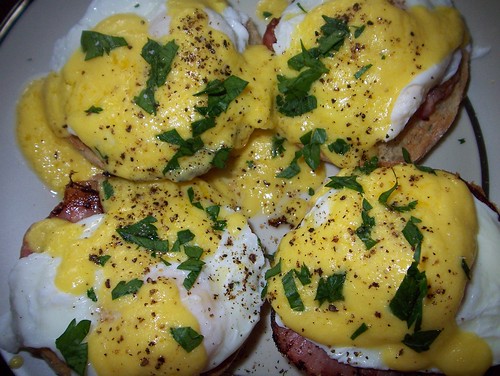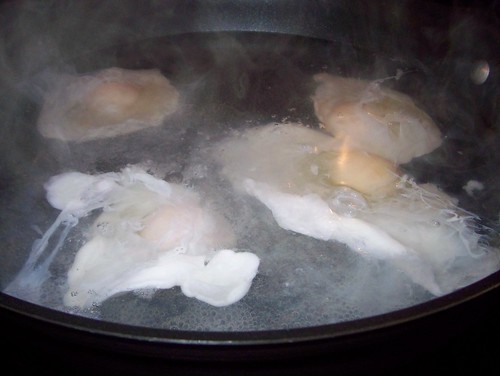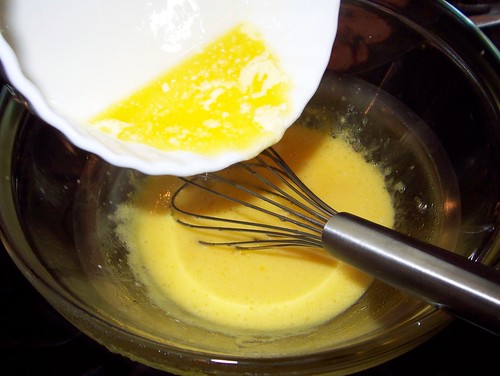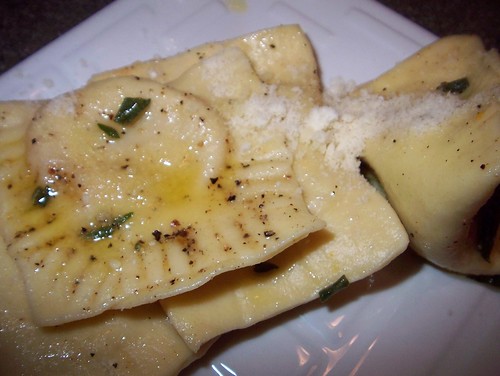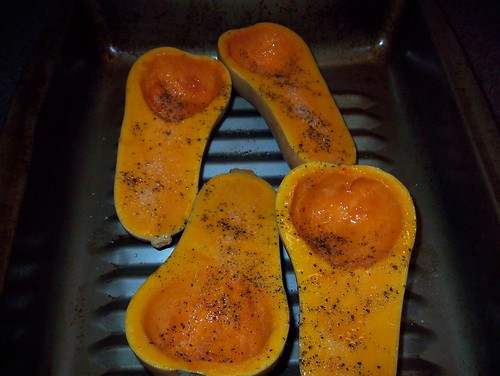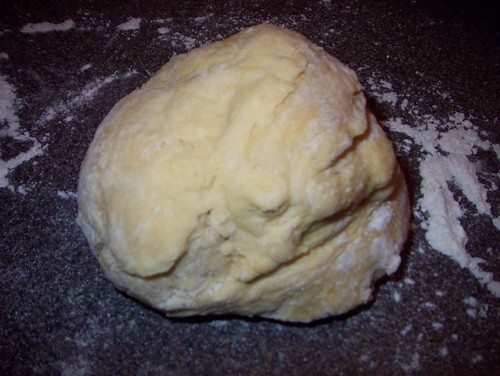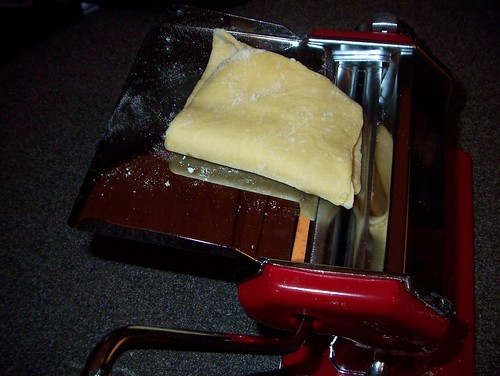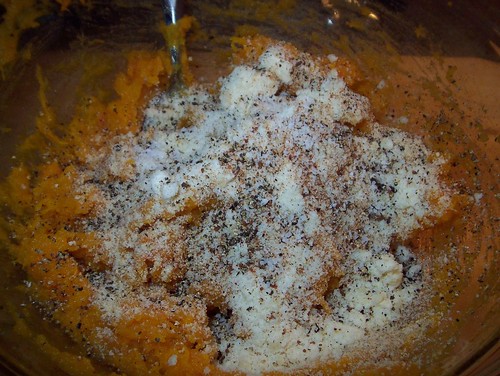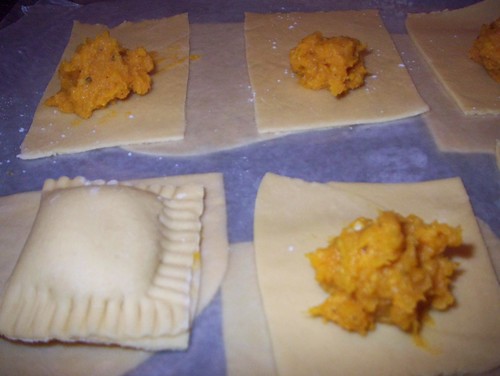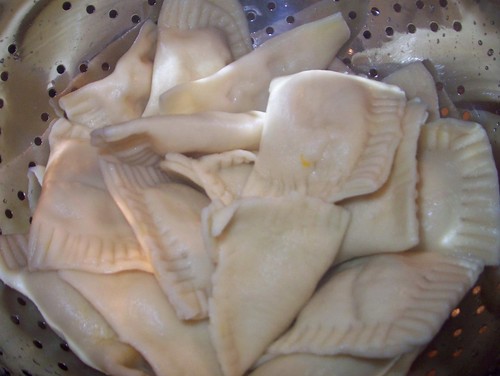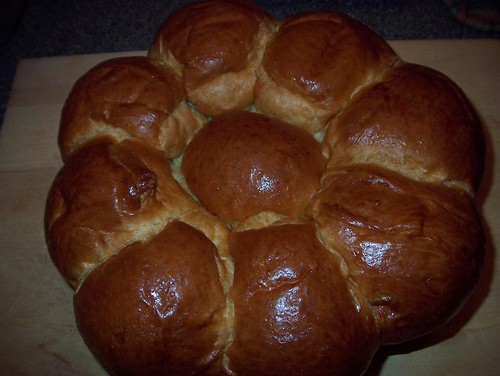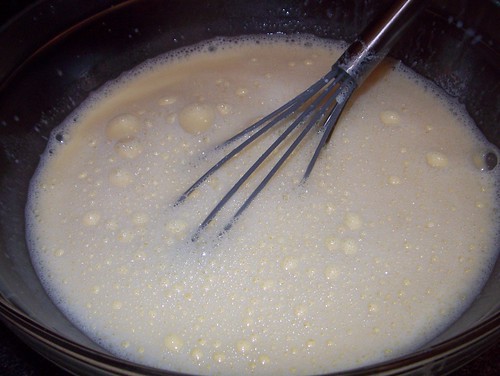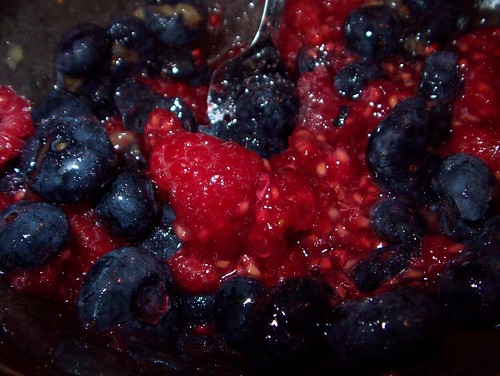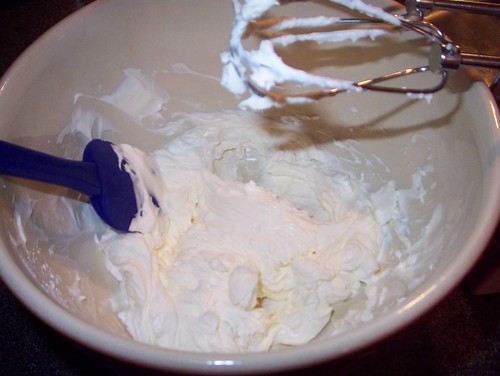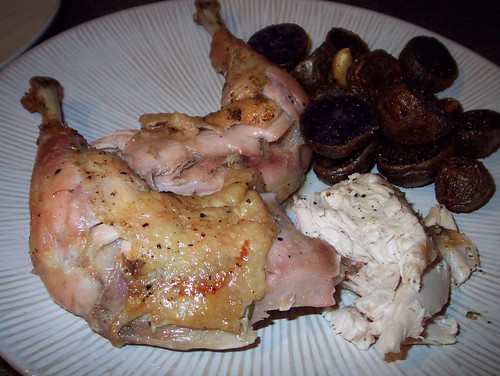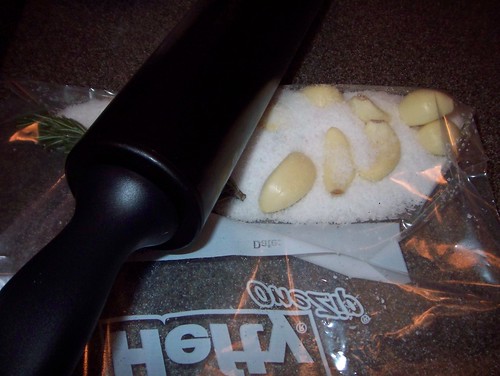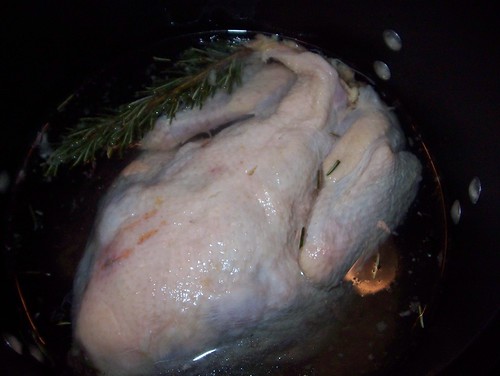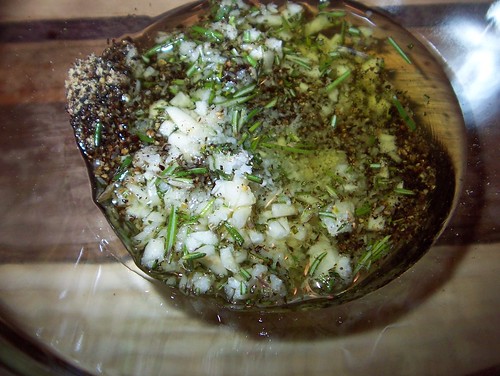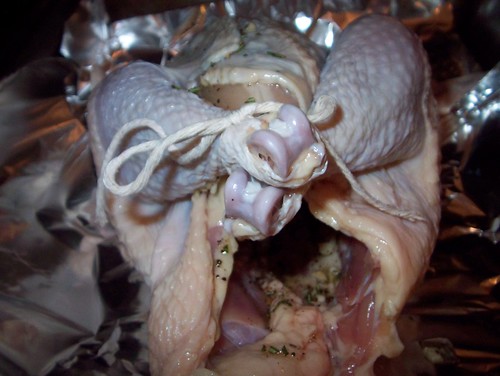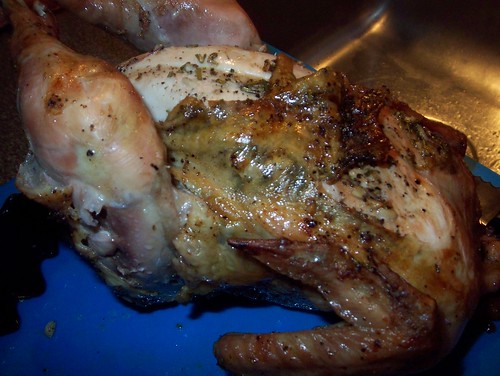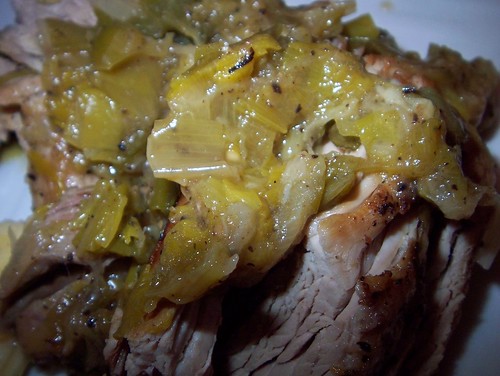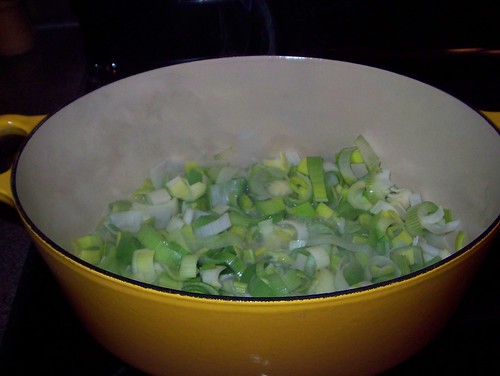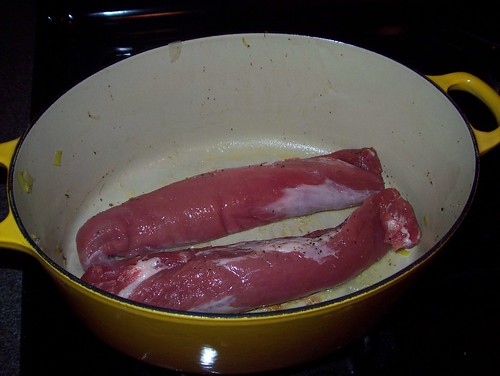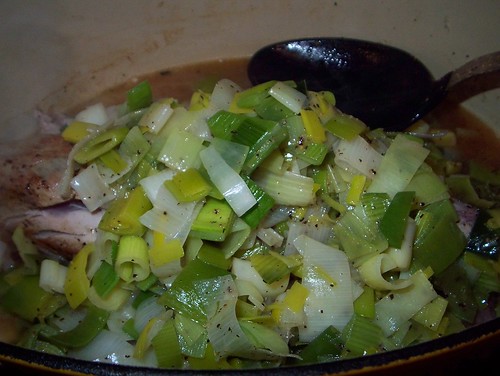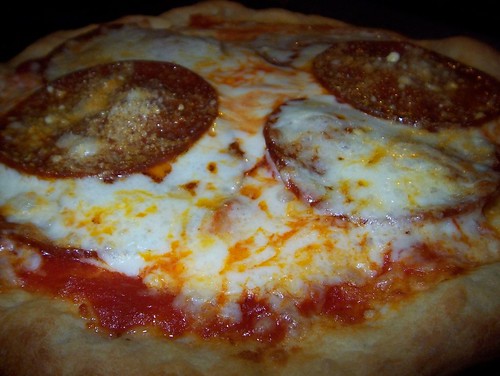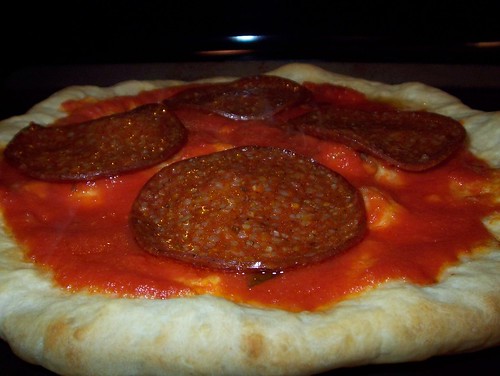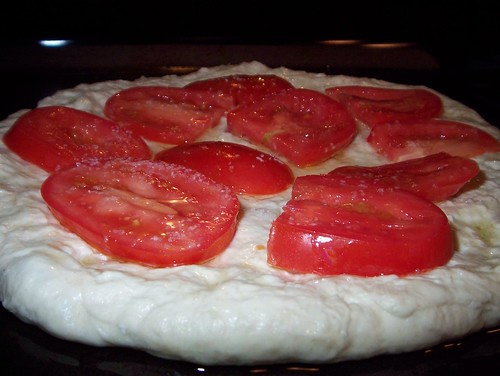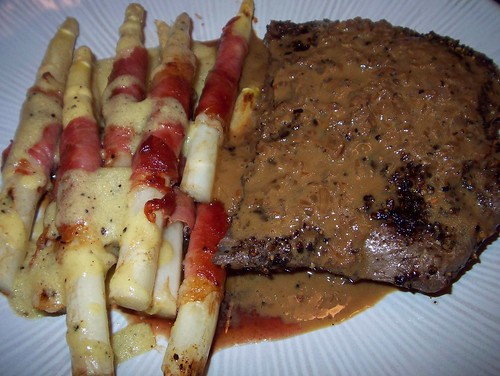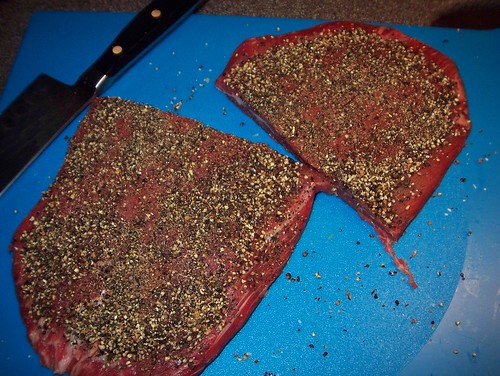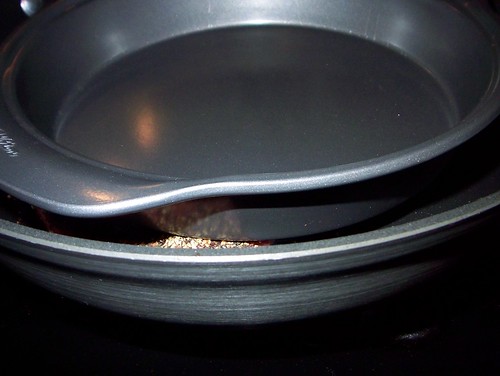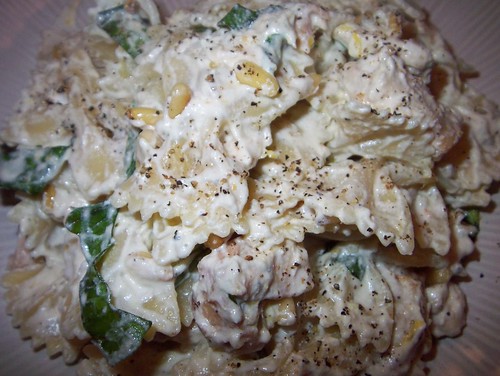
This recipe meets several requirements for the "weekday rotation" in my house: fast (literally 30 minutes start to finish, less if you buy a rotisserie chicken), and lots of protein. If I'm making pasta, I've got to sneak in as much as possible -- did you know part-skim ricotta is a very lean form of protein? Combined with the chicken, this dish has at least 30 grams of protein per serving, meaning it passes my meat-head boyfriend's standards. This is much tastier than a chalky protein powder drink too.
Grocery list: chicken (either 1 pound of boneless skin-on chicken breast, or 1 rotisserie chicken), 1 pound of farfalle (bowtie) pasta, lemons, basil, pine nuts, 1 15-oz container of ricotta, plus garlic & thyme if you're roasting your own chicken.
I've covered roast chicken breast before (here's the full post), but to show how to prep all of this together in 30 minutes, I'll touch on a few points. While you preheat the oven to 400 degrees, mince a few garlic cloves and thyme leaves, pour some salt and a tsp of olive oil on it, and mash together with the flat side of your knife or with tines of a fork. Spread the paste under the skin of the chicken breast, slip a couple of thin slices of lemon under there too, and drizzle olive oil all over the chicken. Season with salt and pepper, and roast for 20 minutes.
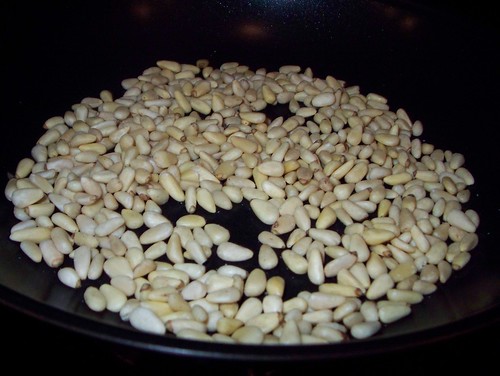
While the chicken roasts, bring your pasta water to boil and prep the other ingredients. Zest a couple of lemons, and chop 1-2 handfuls of basil leaves. Toast a handful of pine nuts in a small fry pan. Cook the pasta (usually 12 minutes for farfalle), drain quickly and return to the pot. When the chicken is done roasting, turn the oven off and let the chicken rest in the oven for another 5 minutes.
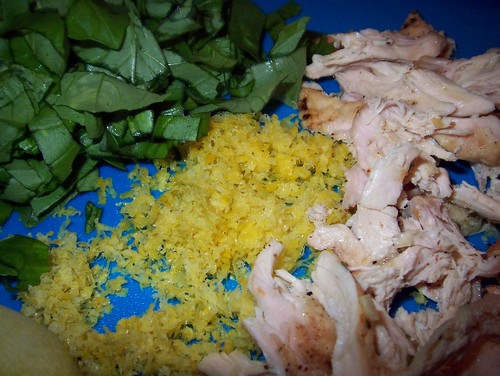
Stir in enough olive oil to coat the pasta -- 1/4 to 1/2 cup. Drop the ricotta in spoonfuls, and stir in the lemon zest and pine nuts. Shred the chicken (discard the skin and lemon slices, but keep all the good bits of garlic and thyme) and stir into the pasta. Season with salt and pepper before serving.


